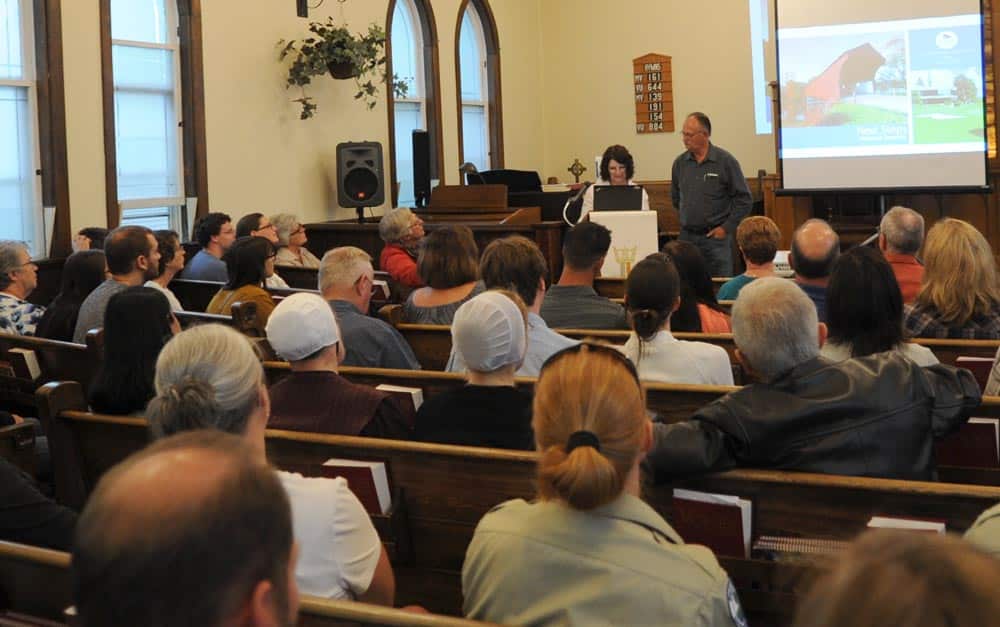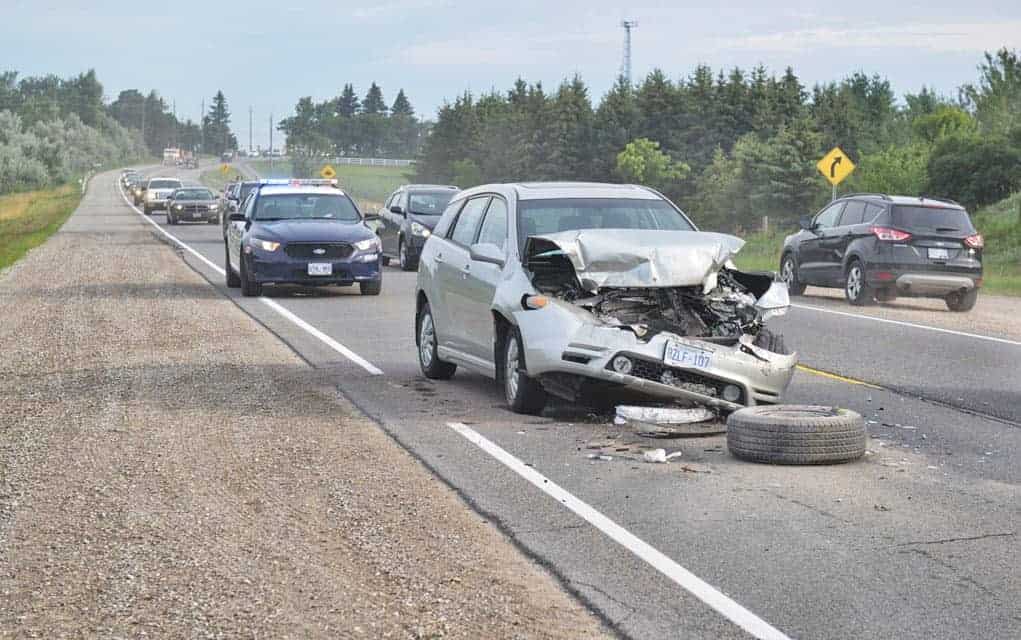
The failure of officials to provide warnings early on in the process led the list of complaints Monday night as West Montrose residents packed a public meeting dissecting the chain of events leading to a significant flood last month.
Representatives of the Grand River Conservation Authority acknowledged communications could have been better, pledging to work on improvements.
The agency learned in the early hours of June 23 about heavy rainfall in the northern part of the Grand River watershed, but both the risk and extent of the flooding only became known over the course of the day, with warnings to the public trickling out.
Hardest hit of the Woolwich locales, West Montrose residents argued the information arrived too late to prepare for the floodwaters that spilled over the banks and into their basements.
A month having passed since the flood, officials from the GRCA and Woolwich Township provided an update of their review of the event as residents gathered at the West Montrose United Church, eager to ask questions. Along with explanations, they wanted to know what would be done to improve the system for next time.
The flooding caught everyone by surprise, said Dwight Boyd, GRCA director of engineering, including the agency itself. But one of the major deficiencies revealed was communication with the public, by both the GRCA and the local emergency relief officials. Many people in the crowd expressed disappointment that the warning had come late, if at all, when the water started to rise.
“We literally have sandbags from (the flood in) 2000, that if we had known we probably could have stopped the damage – in the garage at least and done something,” said West Montrose resident Barbara Dowling, whose garage was flooded. “But we had to use the sandbags to hold the deck down so it wouldn’t rip apart from the house. That was how severe this was.”
Dowling spoke about the bewilderment and sense of loss seeing her home submerged in the waters. Turning her attention to the officials seated together, she was especially scathing, saying, “I don’t trust you anymore.”
“I’m sorry the system let you down,” Woolwich Mayor Sandy Shantz responded. “But it wasn’t Dwight (Boyd) that let you down, it was the system.”
According to Boyd, the GRCA had issued flood warnings at 1:30 p.m. that day through all the usual channels, but admitted the message had been ineffective at reaching people.
“I think the thing that we did discover during this event through some comments from folks was the cell coverage isn’t perfect over the township or over the watershed, and there can be delays on a recipient’s provider’s end also. So email isn’t the perfect technology, and we need to recognize that.”
One change the GRCA wanted to put in place going forward, explained Boyd, was a new five-level system that divided the areas around the river into five flood zones. A level one flood warning, for example, meant that properties in the level one zone (typically right along the river’s edge and in other low-lying areas) were at risk of floods. A level 3 alert meant that those people farther out from the river, in the level 3 flood zone, were at risk of being inundated. An easy to read map would be put on the website to help residents find out their flood zone and keep track accordingly.
“We need some broader township mapping so that when we get into these more extreme events, less frequent events, that other structures or other locations that don’t typically flood, we can anticipate that they’re going to flood,” said Boyd.
The new mapping would be part of an overall reworking of the GRCA’s warning system, which Boyd said needed to be clearer in its message.
But while most of the talk focused on communication, some residents questioned whether the flood could have been averted, or at least drastically reduced, with the Shand Dam on Belwood Lake.
The dam typically serves a dual purpose: flow augmentation, when there is a drought, for example, water can be released from the reservoir to increase the river flow; and flood prevention, in which the reservoir takes in excess water to prevent the rivers from overflowing. Boyd explained that to serve both purposes, the dam needed to strike a careful balance between retaining too much water and too little.
On the day of the flood, June 23, the dam was initially at an operating capacity of 88 per cent, which Boyd describes as the normal level for the season. When the rain fell, the dam levels rose to its maximum safe threshold at 90 per cent, and the GRCA had no choice but to release some of the water. The dam could not stop the flood, says Boyd, but it was able to limit the extent of the flooding as well as delay it by four hours.
Resident Tony Dowling, however, questioned the decision of leaving the dam so close to its maximum capacity, which prevented the GRCA from being able to absorb much of the rainfall. Dowling accepted that while the flooding itself was unexpected in June, the eventuality of such an event was guaranteed – the river was bound to flood at one point or another. He asked the GRCA to consider lowering the water levels in the dam to accommodate unexpected rainfalls, a request echoed by other residents in the flood zone, including Miriam Gingrich.
“I want to add my voice to many others to strongly urge you to please keep the upper level limit lower in the dam, especially when the ground is saturated. High levels have been the problem for some of our worst flooding,” said Gingrich, a long-time resident along the Grand River in West Montrose.
“If the dam level is high you really can’t help as much. It’s too late and there’s just no time.”
The potential for damage to the covered bridge in West Montrose, and the lack of protection for the historical site, was also raised by concerned townspeople. The bridge spanning the Grand River has been a fixture of the village and a significant tourist attraction for years. Residents reported with indignation and anger seeing the beloved landmark struck numerous times by heavy trees and park benches caught in the flooded river.
“(The covered bridge) is the only one in Ontario, it is a Canadian treasure and shame on you for not treating it as such,” said an inn and shopkeeper to the officials, earning a round of applause from the crowd.
Of course more than just the bridge got damaged in the flood, and another sticking point was who would pick up the bill for the waterlogged homes and dashed property. The township submitted an application to the province for disaster relief funds, with Woolwich fire chief Dale Martin noting the paperwork was currently under review.
There were also calls for a “garbage amnesty” with the Region of Waterloo to dispose of the larger levels of soaked debris on people’s property, which the township said they would look into.
While many residents were mollified by the solutions proffered by the GRCA and township, the consensus seemed to be that the system had failed.
“We think that the GRCA was not adequately prepared for this event. We think that the response from the GRCA in managing the flows through the watershed were not adequate. We think the lack of notification was abysmal on part of both the GRCA and the Township of Woolwich,” said Tony Dowling.









